Description
Moringa, Moringa oleifera, also commonly called drumstick tree, horseradish tree or malunggay, is the most nutritious plant on the planet! The leaves are the most nutritious part, containing high levels of protein, calcium, iron, vitamin A, B and C (there is more but I will let you discover that)! How lucky are we living in the tropics being able to grow this plant? Well, tropical environments are not the only way it thrives; it is also highly drought tolerant and can be grown in very dry regions where not many other vegetables grow. The tree is fast growing up to 35 feet, but usually maintained as a hedge for easy harvests. The leaves, roots, flowers, pods, bark and seeds are all edible, making only the wood itself not edible. The seeds are used to make cooking oil and also used as a water purifier!! The plant is extremely medicinal due to its nutritional properties. How incredible!
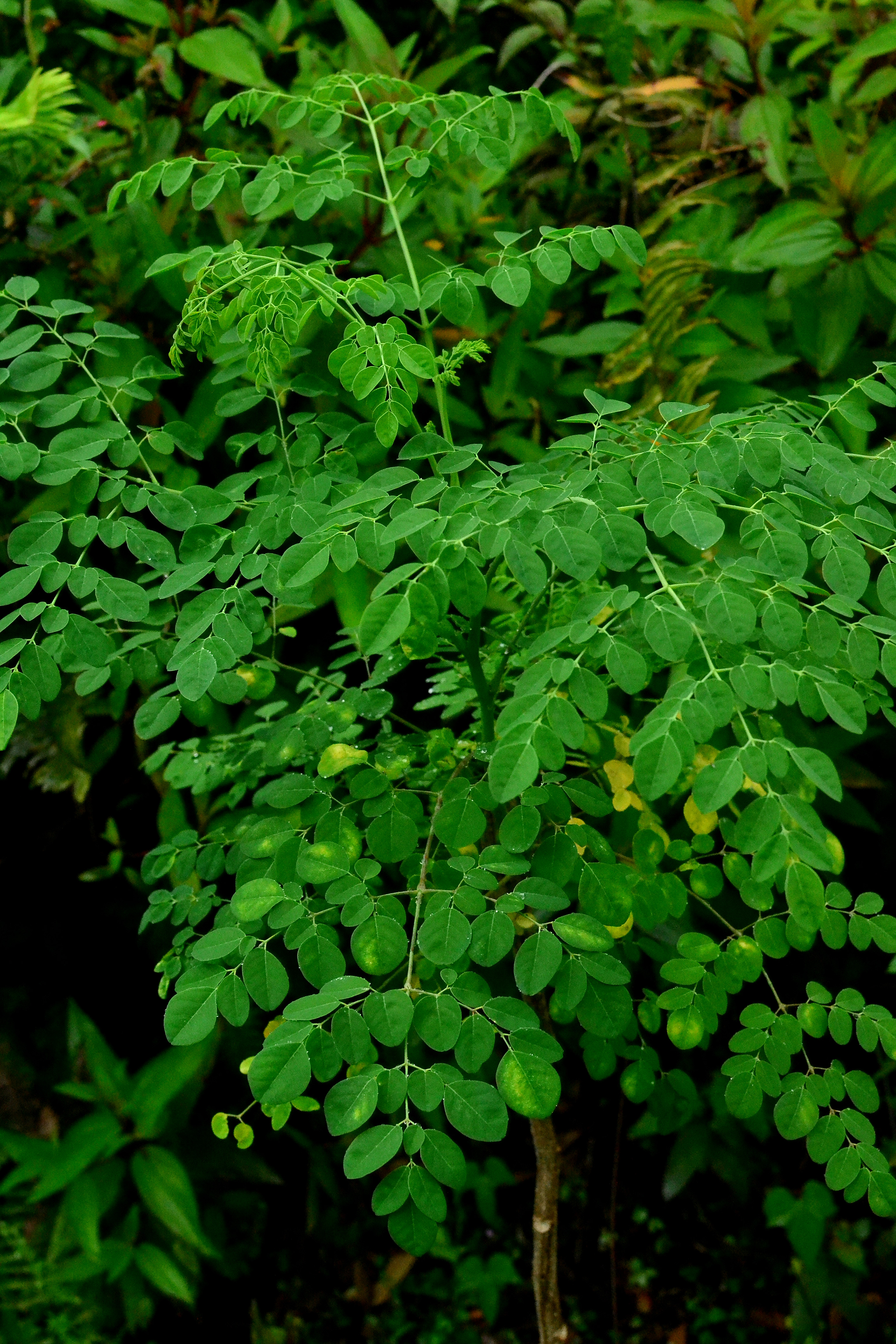
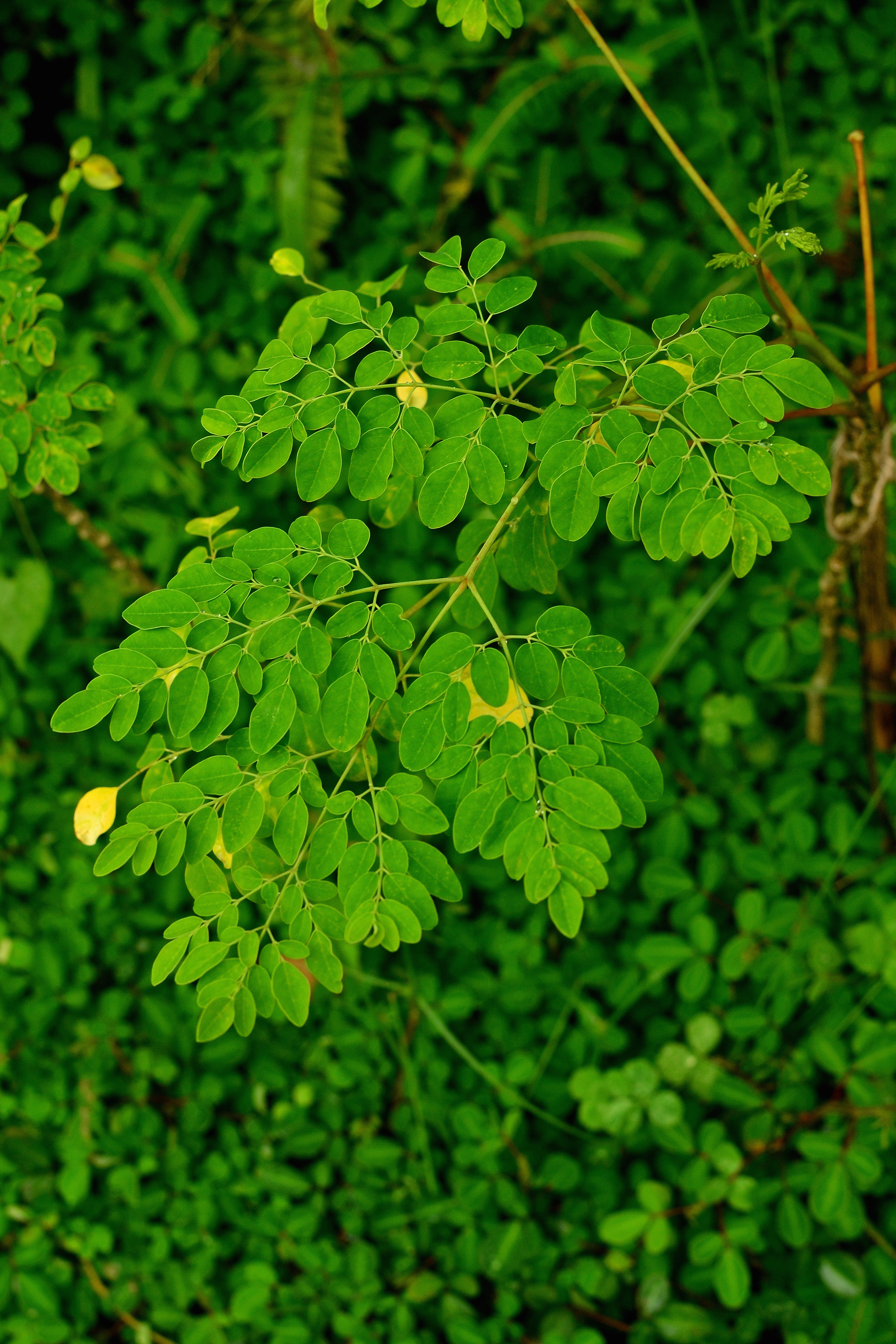
Propagation
Moringa is commonly grown from seed or large woody stem cuttings.
To grow from seed, remove hard seed coat and plant the smaller white seed. Direct sowing is recommended, but I almost always plant into trays. They propagate quickly and grow fast, I like to transplant them in the ground when they are a few inches tall (4-6 inches), because they have a taproot and I do not want to harm that.
To grow from cuttings, select hardwood 18-36 inches long and 2-5 inches thick, leave in a dry shaded place to cure for a few days and plant 1/3 of the cutting into the ground. Make sure the soil is well drained.
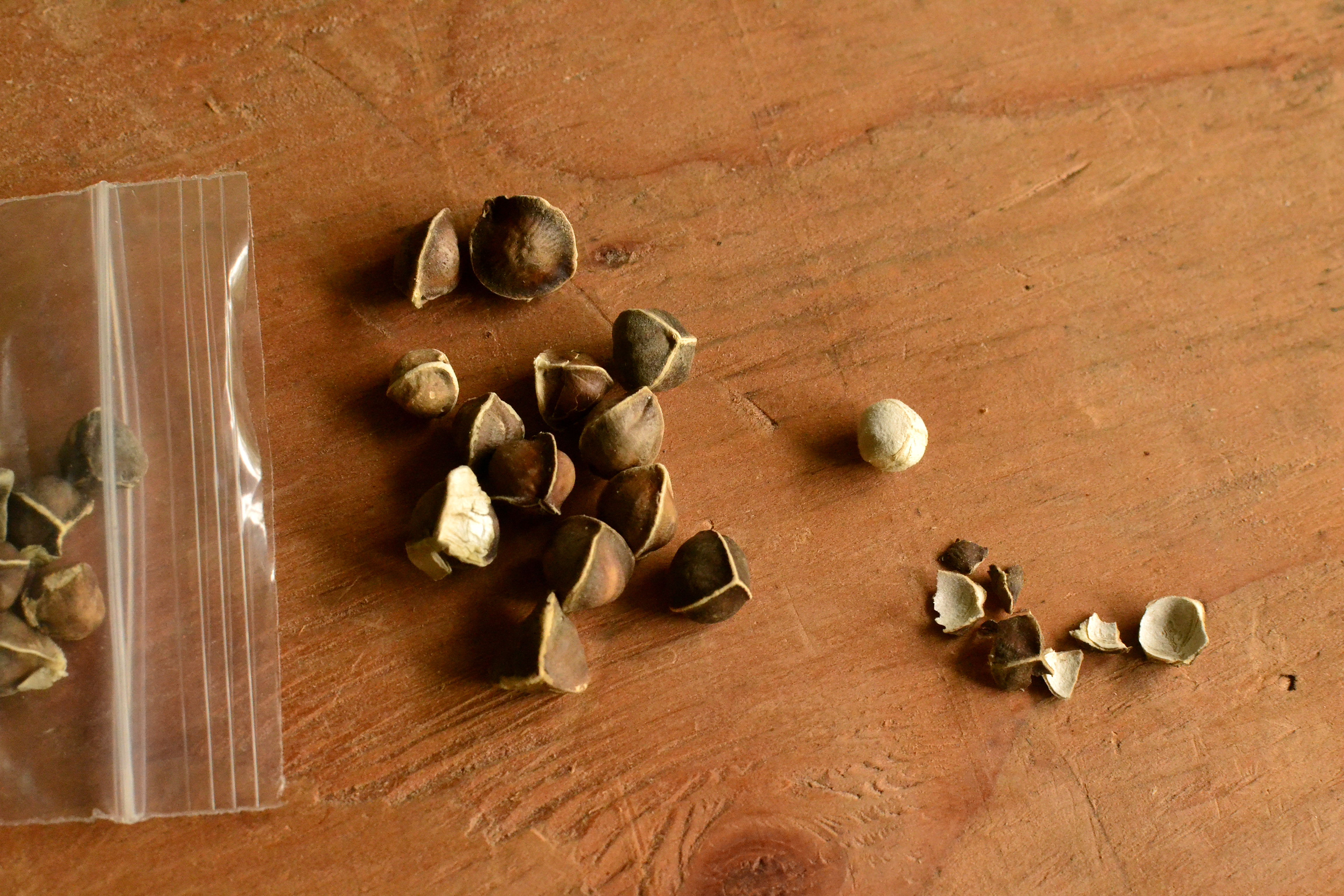
Remove harder outer shell by hand and plant white seed
Care
Weeding is necessary when the plants are young, so they don’t get choked out. Once the plant is taller, you may start trimming the top, to make harvest easier, and produce new leaves for harvest, or let it turn into a full tree.
Eating
Leaves and tender stems are used like spinach, raw or cooked, or thrown in soups and stews. The leaves also change their nutrition content when they are dried, and become more potent in some areas.
The immature seedpod can be eaten raw or cooked like green beans.
Seeds can be roasted, sautéed, or eaten raw. Mature seeds are usually fried.
To make cooking oil from seeds, dry, then roast, mash then boil. Then strain out the solids and let the liquid sit over night, in the morning, the oil will have floated to the surface and can be skimmed off. This oil is called Ben Oil.
Seeds as water treatment: peel and crush/mash seeds to coagulate suspended particles in water, helping to remove disease organisms present. Leave mashed seeds in water for 1 hour. 1.5 grams of Moringa mash filters 32 ounces of water.
Roots may be eaten only after the bark has been removed. Once removed, grate it, add vinegar, and you have a horseradish substitute.
Where to obtain planting materials
If you know someone growing the plant you could ask them for a stem cutting, or for seeds. Typically seedpods at the farmers market will not be mature enough to grow seed. So your other option is to buy seeds from a dealer. They are pretty inexpensive, I believe I got 100+ for around $5, and they have a high germination rate, maybe buy them with a friend to split the cost and the seeds?
My Garden
Moringa was one of the first plants I planted at this property. I was really excited to grow it once I learned about its incredible properties. I eat it in almost every meal I cook. My first planting I got at a plant sale and I currently top it so it doesn’t grow any taller, and next to it I planted some plants I grew from seed, hoping to have a hedge of Moringa one day. It seems the plants like to take their time establishing their roots and are a little weak on their trunks for a while, so I tie them up to some bamboo or stick to keep them straight. But at some point they will focus on above ground growth and take off, filling in the hedge space.
Next to the moringa hedge I have: kale, hot peppers, pineapples, choko, morning glory, lilly, comfrey, random clovers and my tree nursery and above that is wild forest/non-cultivated areas.
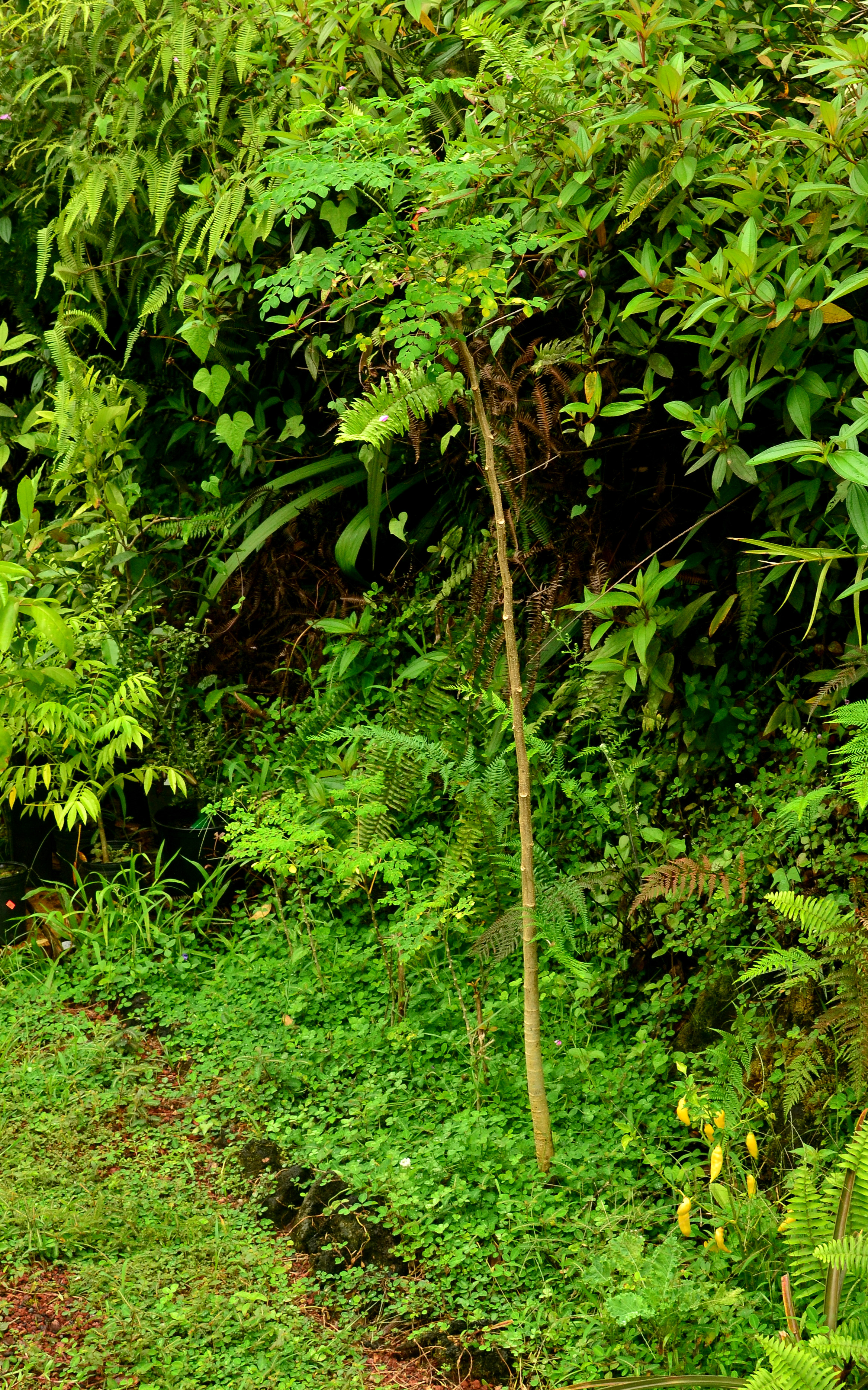
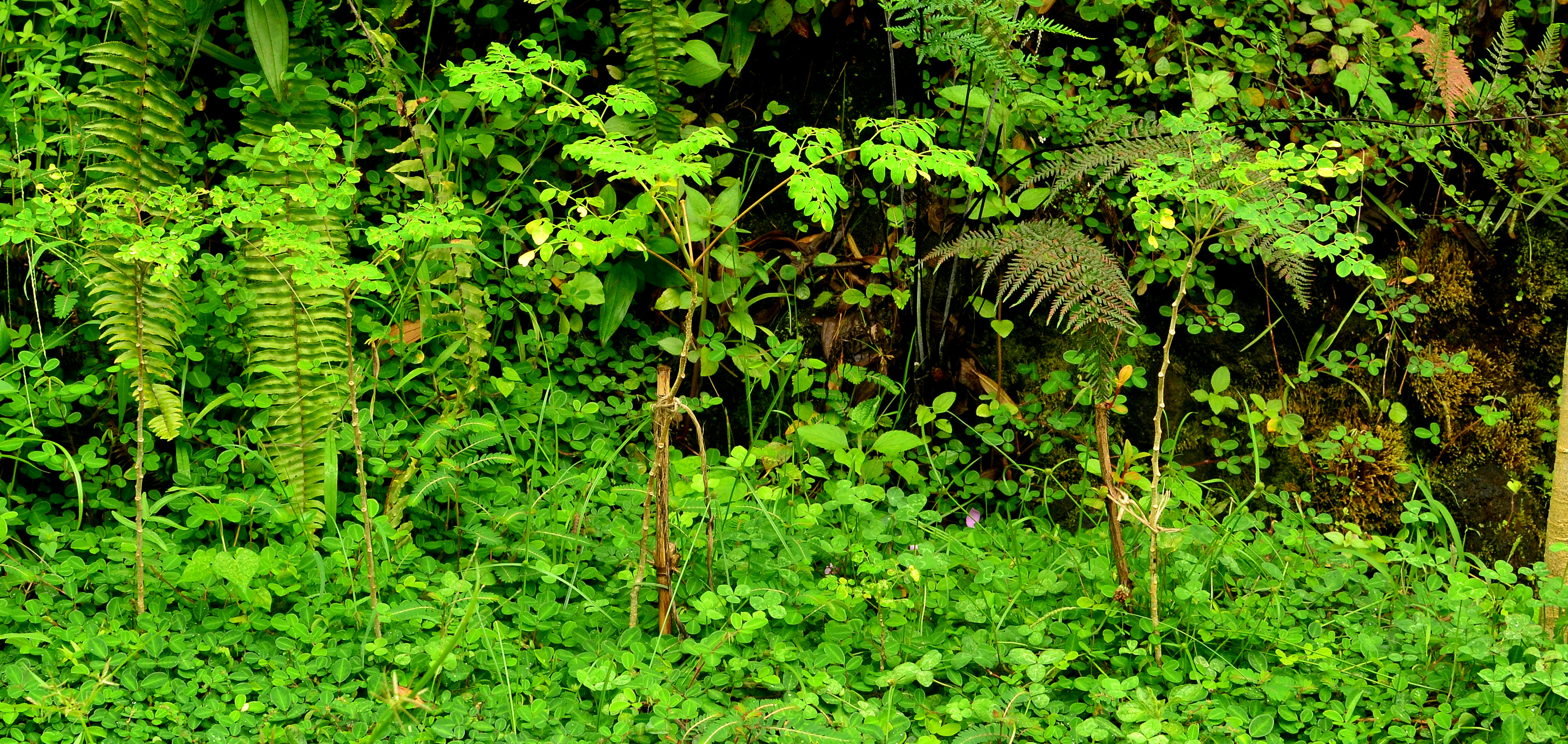
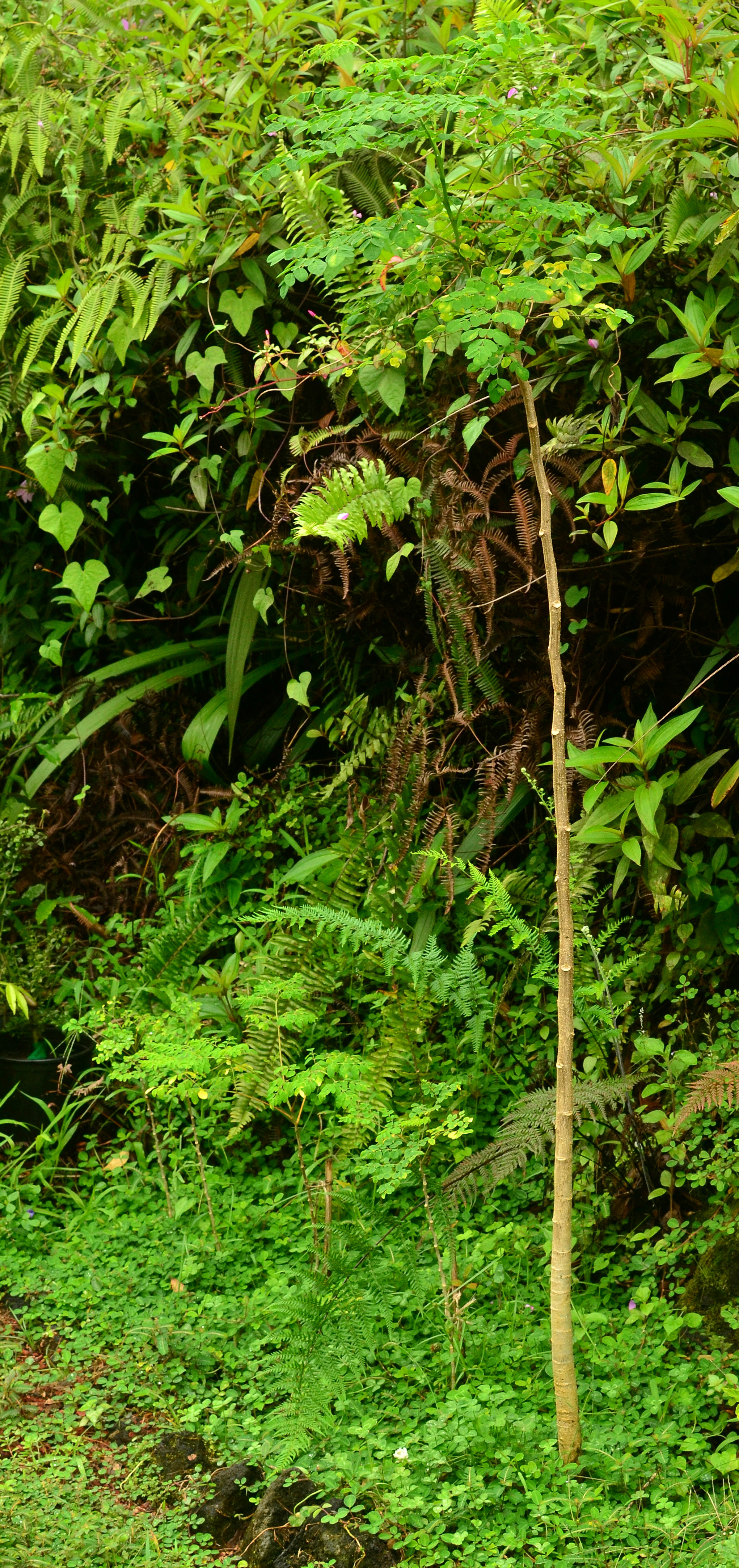
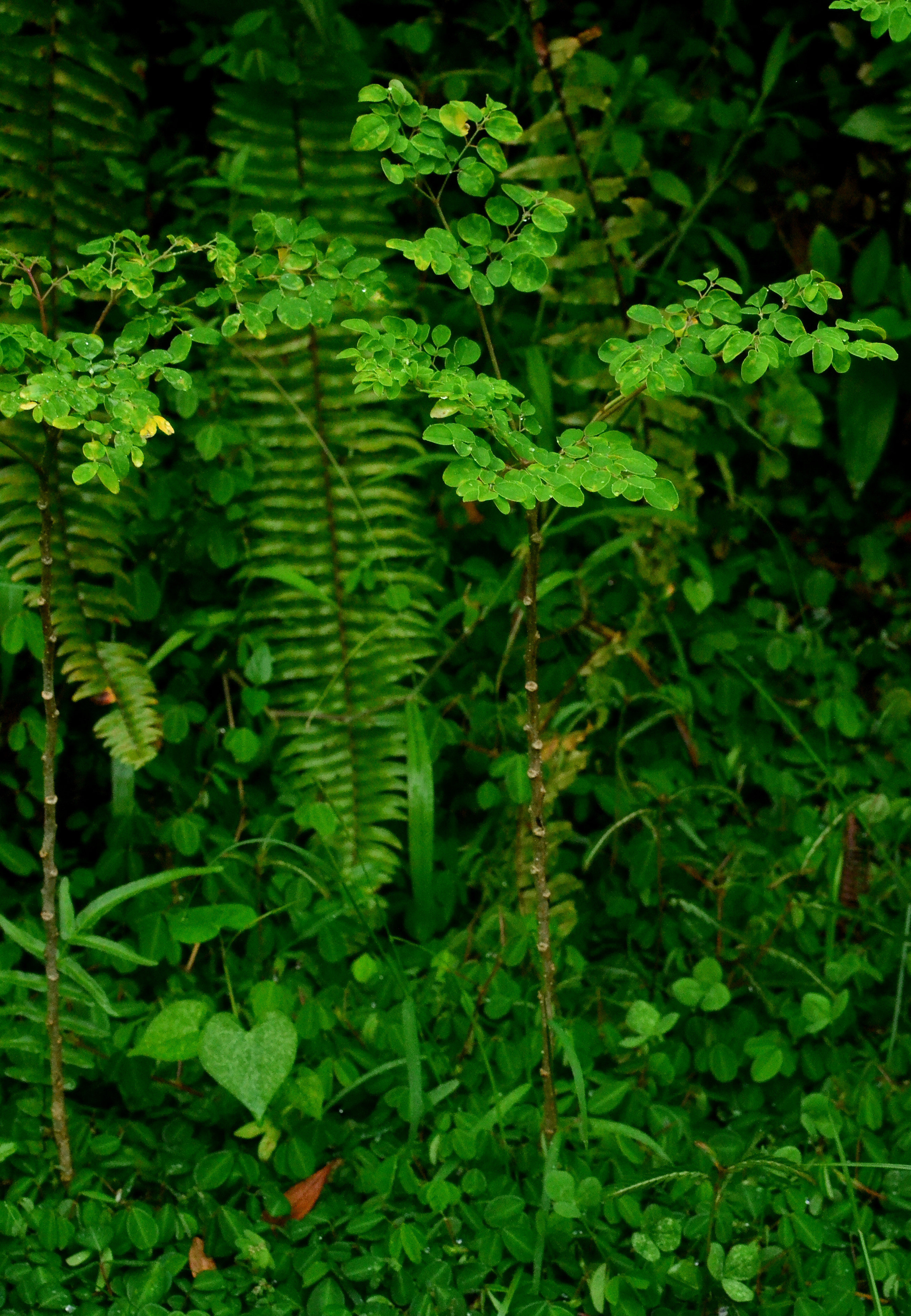
Happy Gardening!
Do you know where I can get some seed? I live on Big Island in Hawaii.
hmm i actually dont know where to get some at this moment, i gave all mine away. i could ask a friend and see if he has any to share. you could check out farmers markets or feed stores for a small plant. ive seen them around quite a bit
Pingback: Rapid Resilient Food Systems | Tropical Self-Sufficiency